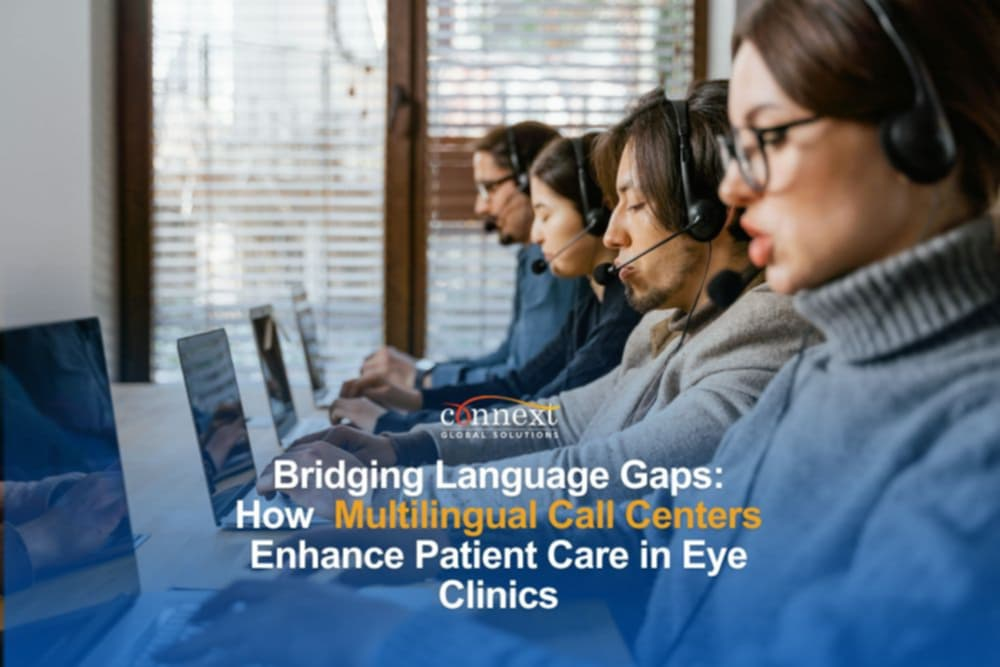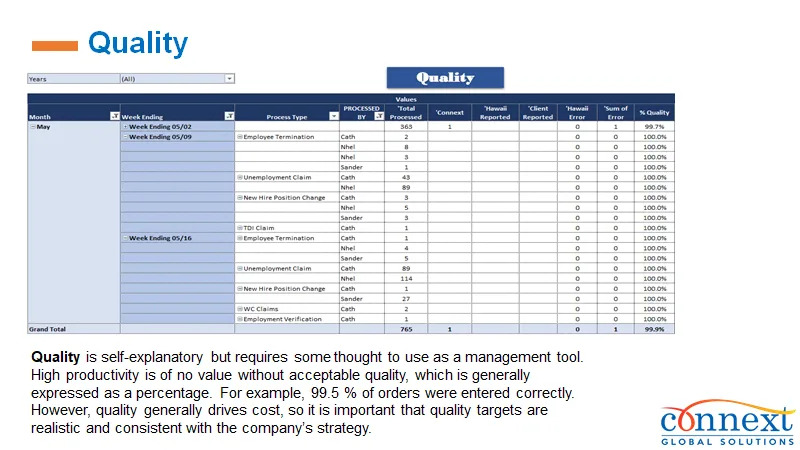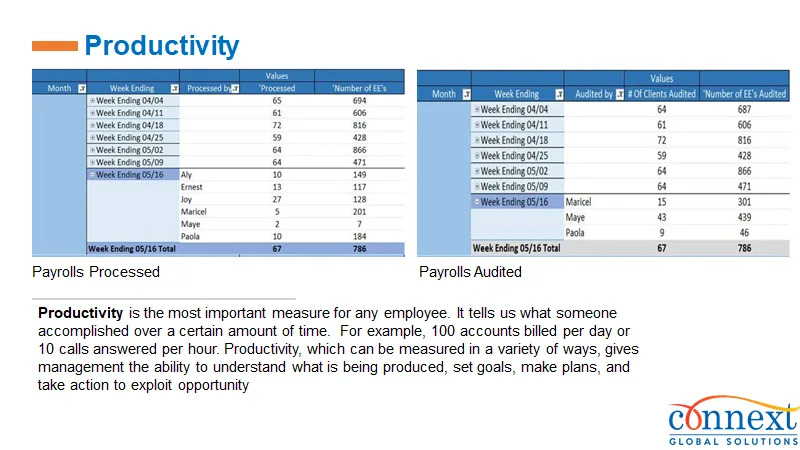The article discusses how multilingual call centers can enhance patient care in Eye Clinics.
As the US becomes increasingly diverse, the need for multilingual services in healthcare has never been more critical. According to the U.S. Census Bureau, 21.7% of US residents speak a language other than English at home.

Photo by MART PRODUCTION
Key Takeaways:
- Multilingual support significantly boosts patient experience and outcomes: Clinics offering services in patients’ native languages see fewer miscommunications, improved compliance, and higher satisfaction
- Specialized support services enhance clinic operations: Outsourced multilingual teams handle appointment scheduling, insurance verification, post-op follow-ups, and educational outreach, helping improve operational efficiency and patient trust .
- Cultural competence is as vital as language proficiency: Agents trained in cultural awareness ensure interactions are personalized and respectful—this fosters stronger patient relationships and a more inclusive clinic environment
- Flexible and scalable support model: Multilingual call services can dynamically scale with clinic needs—covering seasonal peaks, new language requirements, or expanding clinic locations without adding internal staff
- Seamless integration with existing systems ensures smooth care: These services integrate with clinic management software and performance monitoring tools, enabling efficient handoffs, consistent service quality, and full visibility into operations .
This demographic shift is particularly pronounced in major cities:
- Over 40% of Los Angeles and Miami residents speak Spanish at home (“Language Spoken at Home | American Community Survey | U.S. Census Bureau”);
- At 90%, the San Antonio-New Braunfels metro area in Texas has the highest percentage of Spanish speakers among those who speak a language other than English (Dietrich and Hernandez, Language Use in the United States: 2019, American Community Survey Reports).
For healthcare providers, especially in specialized fields like optometry and ophthalmology practices, catering to this diverse population requires effective communication that transcends language barriers. To deliver optimal care, medical facilities such as eye clinics must adapt to this changing landscape by implementing multilingual services.
The critical role of multilingual support in eye care services
Effective communication is a cornerstone of quality healthcare, and this is especially true in specialized fields like optometry and ophthalmology. When patients can understand and participate fully in their eye care, it leads to a multitude of benefits. Studies consistently demonstrate that patients who receive care in their preferred language experience improved health outcomes. They are more likely to comprehend treatment plans, adhere to medication regimens, and follow recommended follow-up appointments. This translates to better patient compliance and overall satisfaction. Healthcare solutions that prioritize effective communication can make a significant impact on patient care and outcomes.
Moreover, clear communication fosters a strong patient-provider relationship, reducing the risk of misunderstandings and errors that can compromise patient safety and care efficiency.
Beyond enhancing patient experiences, providing multilingual support is also a legal and ethical imperative. Federal regulations such as Title VI of the Civil Rights Act mandate that healthcare institutions offer language assistance services to patients with limited English proficiency (LEP). By ensuring that all patients can effectively communicate with their eye care providers, optometry and ophthalmology practices uphold their commitment to providing accessible and equitable care.
Benefits of outsourcing multilingual call center services
Outsourcing multilingual call center services offers several advantages for healthcare practices, particularly in vision care. It ensures that patients receive support in their preferred language, leading to better understanding of care instructions and higher satisfaction levels.
Cost Efficiency
Maintaining an in-house multilingual team can be a significant financial burden. Outsourcing allows practices to access specialized language support without the overhead costs associated with recruitment, training, and infrastructure. This cost-effective approach enables healthcare providers to allocate resources more strategically.
24/7 Availability
Patients often require urgent care or have questions outside of regular office hours. Outsourced call centers can provide round-the-clock support, ensuring that patients can access assistance when they need it most. This uninterrupted service enhances patient satisfaction and builds trust in the practice.
Scalability
Patient volume fluctuates over time. Outsourcing provides the flexibility to adjust staffing levels to meet changing demands. During peak periods, practices can easily scale up their support services, while scaling down during slower times to optimize costs. This adaptability ensures that patients receive consistent and timely support without overstretching internal resources.
Connext Global Solutions: Your partner in multilingual support
Connext Global Solutions understands the unique challenges faced by healthcare practices in today’s multilingual landscape. That’s why we offer a comprehensive solution through our state-of-the-art service centers in Colombia and the Philippines. Bridging language gaps with multilingual call centers enhances patient care, particularly in eye clinics where effective communication is crucial.
Colombia — Spanish Language Expertise and Cultural Sensitivity
Our Colombian service center excels in providing high-quality Spanish-speaking patient support. The team’s exceptional Spanish language proficiency and deep understanding of Hispanic cultures create a comfortable and reassuring patient experience. This is particularly valuable for healthcare practices located in areas with significant Spanish-speaking populations, such as Los Angeles, Miami, and San Antonio. Consider how outsourcing to Colombia can benefit your practice.
The Philippines — Multilingual Proficiency and Technical Excellence
While Spanish remains the most spoken non-English language in US homes, the use of Tagalog, a Philippine language is spreading and is now the third most frequently spoken non-English language in America (Dietrich and Hernandez, Language Use in the United States: 2019, American Community Survey Reports).
Known for their strong IT and communication skills, our Philippine staff is well-equipped to offer language support in English, Tagalog, and other Philippine languages, ensuring efficient and accurate patient interactions.
Seamless Integration and Customized Solutions
Connext seamlessly integrates with existing practice management systems and offers tailored solutions to meet the unique needs of each healthcare practice. Our team works closely with clients to develop customized support plans that encompass various aspects of patient care, from appointment scheduling and insurance verification to post-operative care and multilingual patient education materials.
Implementing multilingual call center services
To successfully implement multilingual call center services, healthcare practices should follow these steps:
Needs assessment: Identify your patient demographics, language needs, and peak call times to determine the scope of multilingual support required.
Partner selection: Choose a reputable call center outsourcing partner with a proven track record in healthcare and multilingual services.
Technology integration: Ensure seamless integration between your practice management system and the call center platform to optimize data exchange and patient interactions.
Training and implementation: Collaborate with the call center provider to train agents on your practice procedures, terminology, and patient communication protocols.
Performance monitoring: Regularly assess key performance indicators to measure the effectiveness of the multilingual call center services and identify areas for improvement.
By following these steps and partnering with a reliable provider, healthcare practices can effectively bridge language gaps, enhance patient satisfaction, and optimize operational efficiency.
Conclusion
By incorporating multilingual services into your vision care practice, you can significantly enhance patient care and satisfaction. Connext Global Solutions offers a strategic solution through our cost-effective, scalable, and high-quality multilingual call center services. Our Colombian and Philippine service centers provide exceptional language proficiency, cultural sensitivity, and technical expertise to meet the diverse needs of your patient population.
Investing in multilingual support yields numerous benefits: improved patient outcomes, increased patient satisfaction, enhanced operational efficiency, and expanded patient reach. By bridging language barriers, you can build stronger patient relationships, foster trust, and create a more inclusive healthcare environment.
Ready to transform your practice? Contact Connext Global Solutions today to explore our customized multilingual call center solutions and discover how we can help you deliver exceptional patient care to every individual, regardless of language. Get in touch with us and elevate your eye clinic’s patient care with multilingual support.
Frequently Asked Questions
They ensure clear communication with patients who speak different languages, reducing misunderstandings, boosting appointment compliance, and increasing overall satisfaction levels.
Common languages include English, Spanish, Mandarin, Tagalog, Arabic, and others. Alignment with your clinic’s patient demographics is key—examined via local market insights or patient survey data.
These agents can manage appointment scheduling, pre- and post-operative patient communication, insurance verification, billing assistance, educational outreach, and personalized follow-up calls.
Reputable providers offer specialized training in medical terminology (ophthalmology), cultural competency, clinic-specific procedures, privacy compliance (HIPAA/GDPR), and technology workflows.
Yes—most support integration with EMRs, CRM software, or clinic management platforms (e.g., Epic, AthenaHealth, Salesforce Health Cloud), enabling seamless handoffs and real-time updates.
References
Diamond, Lisa, et al. “A Systematic Review of the Impact of Patient–Physician Non-English Language Concordance on Quality of Care and Outcomes.” Journal of General Internal Medicine, no. 8, Springer Science and Business Media LLC, May 2019, pp. 1591–606. Crossref, doi:10.1007/s11606-019-04847-5.
Dietrich, Sandy, and Erik Hernandez. Language Use in the United States: 2019, American Community Survey Reports. United States Census Bureau, Aug. 2022, https://www.census.gov/content/dam/Census/library/publications/2022/acs/acs-50.pdf.
—. “What Languages Do We Speak in the United States?” Census.Gov, https://census.gov /, 15 Dec. 2022, https://www.census.gov/library/stories/2022/12/languages-we-speak-in-united-states.html.
“Language Spoken at Home | American Community Survey | U.S. Census Bureau.” Census.Gov, https://census.gov /, https://www.census.gov/acs/www/about/why-we-ask-each-question/language/.
“Limited English Proficiency (LEP) | HHS.Gov.” HHS.Gov, 13 Aug. 2007, https://www.hhs.gov/civil-rights/for-individuals/special-topics/limited-english-proficiency/index.html. McMahon, Nic. “Improve Patient Outcomes by Speaking Their Language.” Physicians Practice, Physicians Practice, 5 Apr. 2024, https://www.physicianspractice.com/view/improve-patient-outcomes-by-speaking-their-language.








